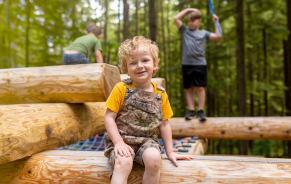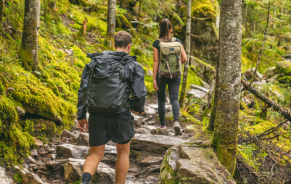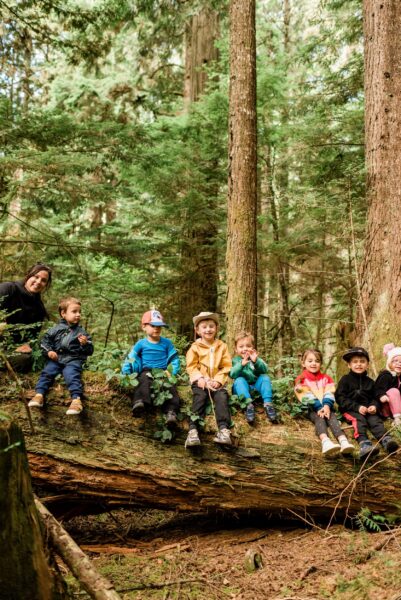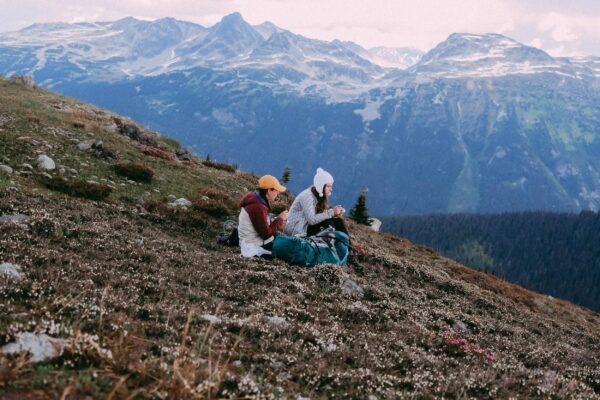Have you ever noticed pops of red, orange, and purple tucked among the forest leaves? The Lower Mainland is full of incredible plant life, especially wild berries that add colour and character to the forest.
In Maple Ridge, these native plants play an important role in the ecosystem. They help support local wildlife, improve air and water quality, and make our natural spaces even more vibrant. Learning to recognize different species can help you feel more connected to the land around you.
In this post, we’ll look at some of the common berries you might spot on local trails, share tips for identifying them, and highlight how each one contributes to the forest community.
Exploring and Identifying Berries the Right Way
Being able to recognize different plants while out on a hike is a pretty cool skill, but it’s just as important to make sure you’re not disturbing the places they grow. That way, others can enjoy them too.
Here are some tips for when you’re out in the woods:
- Harvest responsibly: If you’re foraging for berries*, follow the principles of Honourable Harvest – only take what you need, never take the first or last, and always ask for permission. These ideas come from Indigenous teachings that encourage respect and gratitude.
*Note: foraging is not permitted at the Malcolm Knapp Research Forest in Maple Ridge. - Leave no trace: Respect the land and leave it just as you found it. Watch where you walk and don’t trample plants or disturb animal homes.
- Know the rules: Be aware of any rules about public vs private property. If you see signs about habitat restoration, definitely stick to the trails and avoid wandering off to look at things.
- Use reliable resources: Grab a good field guide or a plant identification app. Make sure you have all the info to double-check what you’re seeing.
- Start simple: Begin by learning the plants that are easy to recognize and then gradually expand your know-how. Don’t let overconfidence lead to mistakes!
- Support conservation: Learn about groups working to protect natural areas and promote sustainable practices. Maybe you can even volunteer or donate to help out.
By following these tips, we can help keep forests healthy and full of life – for ourselves, for wildlife, and for future generations.

Learning from the Land and Its Languages
You might notice that some berries in this guide include names written in hən̓q̓əmin̓əm̓ (pronounced “hunk-uh-meen-uhm”), one of the traditional languages spoken by many Coast Salish Peoples in the Lower Mainland.
Including these names is one small way to recognize the deep knowledge and relationship Indigenous communities have with the land and its plants. For thousands of years, local berries have been used not just for food, but also for medicine, trade, and ceremony.
We’re grateful to share these names with permission, and encourage you to keep learning about the cultural importance of the plants you see on the trail.
Common Berries in Maple Ridge
Vancouver’s mild climate is perfect to see different kinds of wild berries. We’ve put together a list of the more common ones to keep an eye out for while you’re out and about on your next walk or hike.
1. Blueberry (mál̓cəm)
There are two common wild species in this area:
- Alaskan Blueberry (Vaccinium alaskaense)
- Oval-leaved Blueberry (Vaccinium ovalifolium)
These berries are round and bluish-purple, growing in clusters on shrubs with small, oval leaves. Alaskan blueberries tend to grow taller with slightly larger fruit, while oval-leaved blueberries are often found lower to the ground and have a tangier taste. Both are an important food source for wildlife.
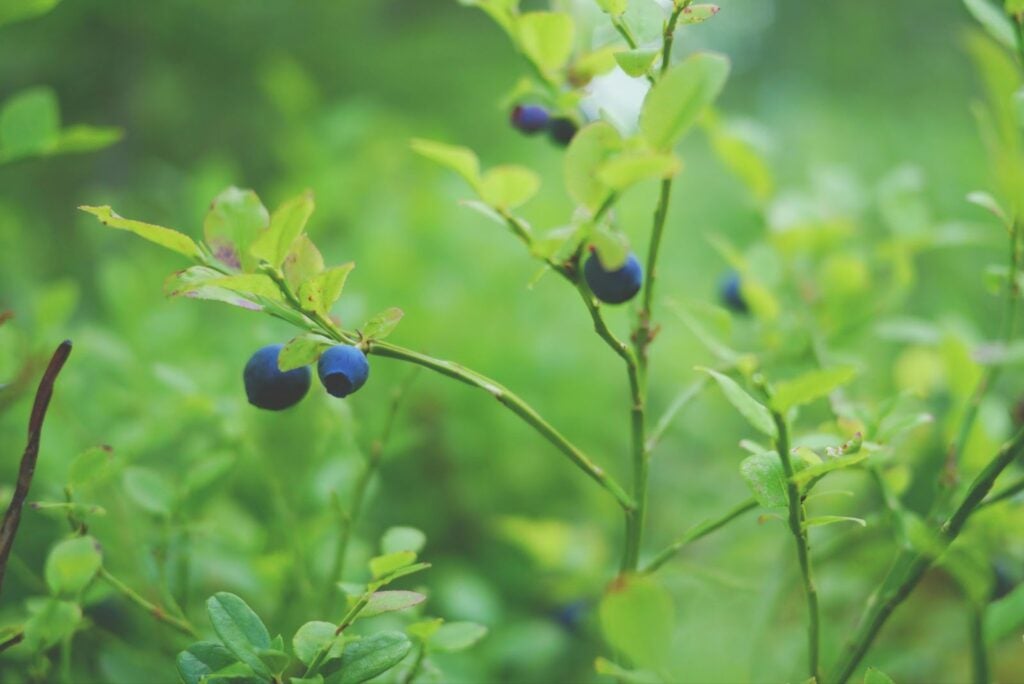
2. Dull Oregon-Grape (lə́ləc̓əłp)
These tall plants have pairs of spiny leaves that are green in the summer and turn a pretty red and purple colour in the winter. They have bright yellow flowers and blue berries that look like a cross between grapes and blueberries. Bears, birds, and small mammals love eating these tart berries, while deer and other plant-eaters graze on the leaves.

3. Red Huckleberry (sk̓ʷə́qʷcəs)
They look similar in size and shape to blueberries but are bright shiny red in the Lower Mainland. They grow on tall bushes, sometimes reaching up to 4m tall, with small oval green leaves. Many different animals and birds eat them, which helps spread their seeds.

4. Salmonberry (fruit – lílaʔ, bush – lílaʔałp)
These grow on bushes with thorny stems and leaves that grow in threes. You usually find them mostly in moist, shady areas and near streams. When ripe, these berries range from yellow-orange to a rich red colour. They’re larger and softer than raspberries, with a slight fuzzy texture.
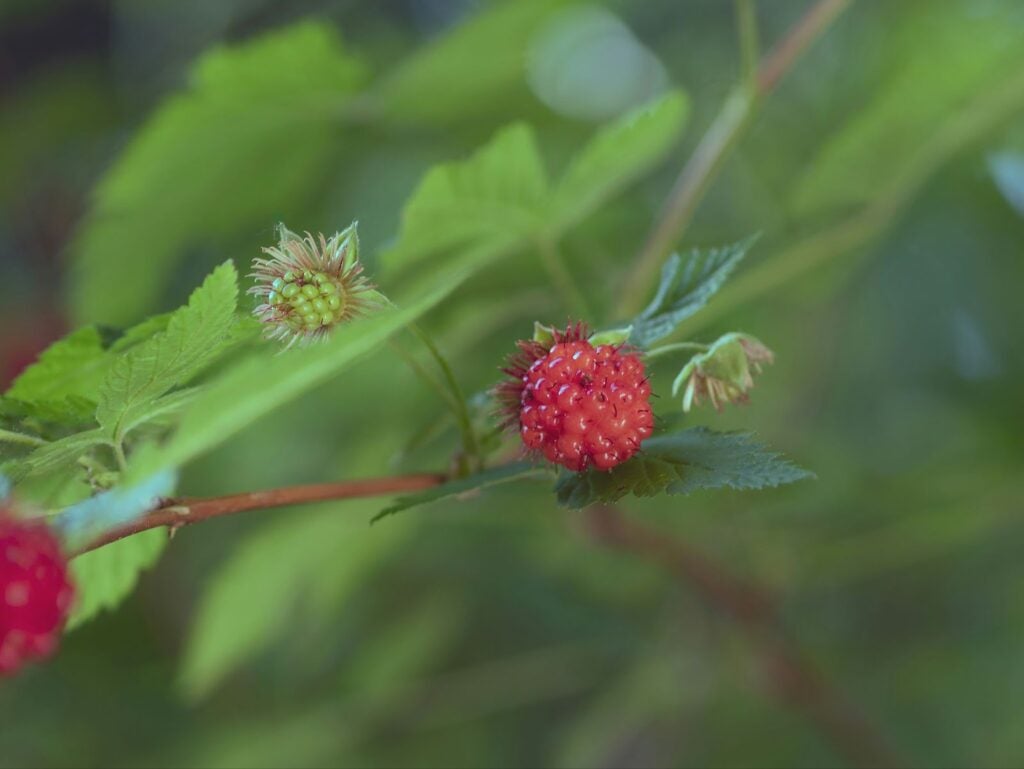
5. Trailing Blackberry (sk̓ʷí·lməxʷ)
The trailing blackberry is a really common wild native berry in the Lower Mainland. Its leaves grow alternatively from a round stem in groups of three and its thorns are smaller in comparison to its cousin. They are a smaller blackberry species that grows along the ground and is a species native to BC.

6. Himalayan Blackberry
The Himalayan blackberry grows in large patches that can get up to 5 feet tall with large painful thorns so be careful when you’re around them! Their leaves grow in groups of 5 that emerge alternatively from its more geometric or polygonal stem. They are considered invasive and local nature groups, such as Nature Vancouver, are working to try and remove it from the area so that more local plants can grow and flourish.
6. Thimbleberry (fruit – t̓qʷə́m, bush – t̓qʷə́məłp)
Thimbleberries have white flowers that turn into bright red, dome-shaped berries that are soft and fragile to the touch. They look like a shallow cap or thimble (where they get their name!), and are very fuzzy. Thimbleberry bushes have large, soft, maple-like leaves and no thorns.

7. Salal Berry (t̓éqeʔ)
These dark purple berries grow on thick, evergreen shrubs with shiny leaves. They ripen later in the season and are an important traditional food for many Indigenous communities. Look for them in shady forest areas.
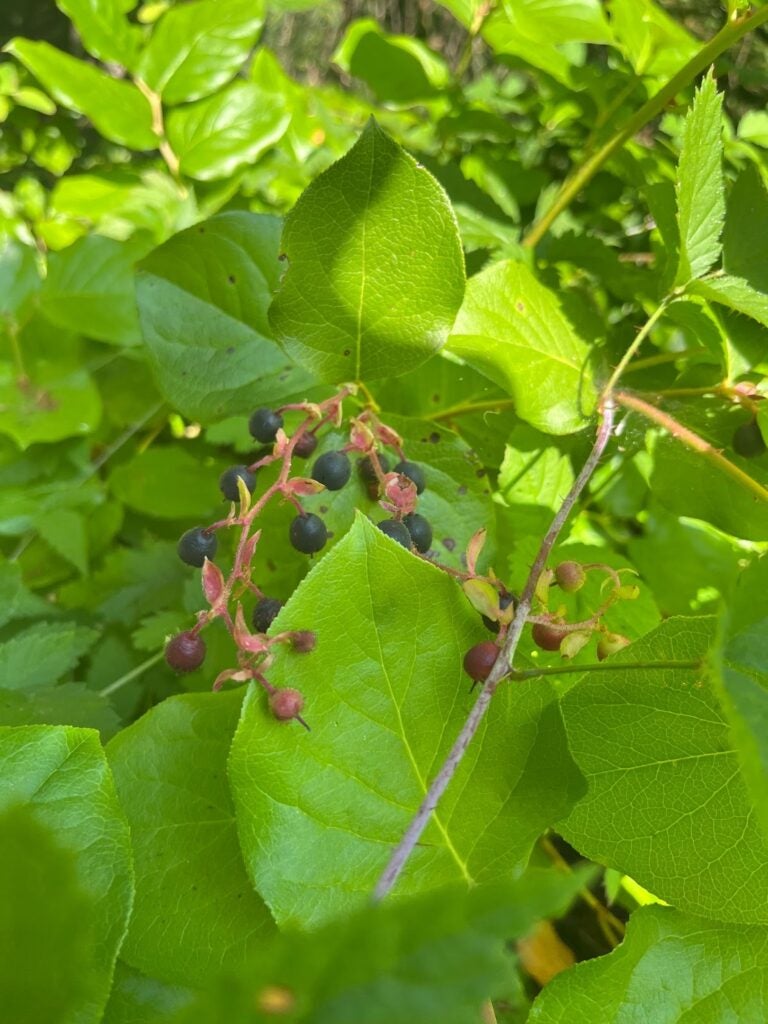
Take Your Exploration Further
You can really get to know Maple Ridge’s local plants and animals with our Forest Schools, Summer Camps, or Special Events throughout the summer. Or bring your family to one of our special events, like our foraged dinners.
If you’re interested in learning about foraging, we suggest you join a local expert guide such as Foraging with You or Swallow Tail Culinary Adventures. They can create a wild food experience you won’t forget!
Please Note: This is not a complete guide to our local berries and we strongly advise against picking any berries without being 100% sure of what they are. Also, a reminder that foraging is not permitted at the Malcolm Knapp Research Forest in Maple Ridge or the Alex Fraser Research Forest in Williams Lake.
Credits
The hən̓q̓əmin̓əm̓ names and reference to the Honourable Harvest included in this article are credited to Cheyenne Cunningham:
ʔa∙ nə siʔəm̓ nə siyey̓ə Cheyenne θə nə skʷix, təli cən ʔəƛ̓ q̓íc̓əy̓
Hello, my relatives and friends, my name is Cheyenne, I am from Katzie First Nation. I am Coast Salish on my dad’s side and English on my mother’s side. My proposed research explores Katzie First Nation and territorial place names that have been identified in Suttles (1955) Katzie Ethnographic Notes. I seek to document and analyze Indigenous linguistic and relational knowledge embedded with geographic/physical landscapes and revealed through community engagement with the land and place (i.e., stories, cultural practices, such as harvesting knowledge and stewardship activities).
